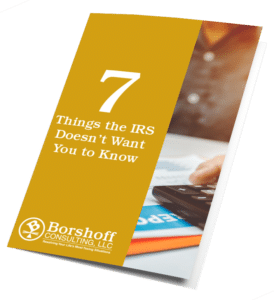As the holidays approach and the new year looms, it’s time to get proactive about your finances. Whether you’re an individual preparing for retirement or a small business owner managing your operations, the end of the year presents a golden opportunity to align your tax strategies with your financial goals.
To make the most of this critical time, we’ve compiled a comprehensive checklist of actions to help you maximize tax savings, meet key deadlines, and ensure a smooth transition into the next tax season.
Maximize Retirement Contributions
Boost your retirement savings and lower your taxable income.
Contributing the maximum amount to your retirement accounts is one of the easiest ways to reduce your taxable income. For 2024, contributions toIndividual Retirement Accounts (IRAs) can be made until April 15, 2025, while contributions to employer-sponsored plans like 401(k)s must typically be made by your tax-filing deadline, including extensions.
If you haven’t already, consider setting up or funding plans like a SEP IRAor SIMPLE IRA for your small business. These not only help you save for retirement but also provide valuable tax benefits.
Take Required Minimum Distributions (RMDs)
Avoid penalties by meeting RMD deadlines.
If you’re 73 or older, you must take Required Minimum Distributions (RMDs)from tax-deferred retirement accounts like IRAs and 401(k)s by December 31, 2024. Missing this deadline could result in a steep penalty—50% of the RMD amount.
Those who turned 73 this year can defer their first RMD until April 1, 2025, but be cautious: this may require taking two RMDs in the same year, potentially increasing your tax burden.
Inherited IRAs add another layer of complexity. Under recent IRS regulations, many beneficiaries must withdraw the entire account balance within 10 years of the original owner’s death, with annual RMDs starting in 2025. To navigate these changes, consult a tax professional.
Harvest Your Investment Losses
Offset gains with tax-loss harvesting.
If your investments have underperformed, you can sell those assets at a loss to offset capital gains elsewhere in your portfolio. This strategy, known as tax-loss harvesting, can also reduce taxable income by up to $3,000 annually.
However, beware of the wash sale rule<, which disallows tax deductions if you repurchase the same or a “substantially identical” security within 30 days before or after the sale. A financial advisor can help you execute this strategy effectively and ensure compliance with IRS rules.
Make Year-End Gifts
Use the annual gift tax exclusion to your advantage.
The IRS allows tax-free gifts of up to $18,000 per recipient in 2024 (or $36,000 for married couples). This is a “use it or lose it” opportunity—any unused portion of this exclusion cannot be carried over to the next year.
For larger gifts, you can tap into the lifetime gift tax exemption, which stands at $13.61 million per individual in 2024. Keep in mind that this exemption will decrease after 2025 due to the expiration of provisions under the Tax Cuts and Jobs Act of 2017, making advanced gift planning essential.
Donate to Charity
Give back and reduce your tax burden.
Charitable contributions are a powerful way to support causes you care about while reducing taxable income. If you itemize deductions, donations of cash or property can be deducted up to certain limits, depending on your Adjusted Gross Income (AGI).
Consider donating appreciated securities or assets instead of cash. This allows you to deduct their fair market value while avoiding capital gains taxes.
For those aged 70½ or older, a Qualified Charitable Distribution (QCD) of up to $105,000 directly from your IRA can meet RMD requirements and reduce taxable income without being subject to income tax.
Review Stock Options
Optimize the tax impact of incentive stock options.
If your employer offers incentive stock options (ISOs), year-end is the perfect time to assess your tax situation. If exercising these options won’t trigger the Alternative Minimum Tax (AMT) in 2024, you could purchase company stock at a discount with minimal tax impact.
Because the tax implications of ISOs are highly specific, consult a tax professional to determine the best approach for your unique circumstances.
Consult with Advisors
Professional guidance can make all the difference.
Tax planning is not one-size-fits-all. Your financial goals, income level, and business operations all influence the best strategies for your situation. Schedule a year-end review with your tax professional and financial advisor to create a plan tailored to your needs.
Final Thoughts
The end of the year is a time of reflection and planning. By taking these steps now, you can position yourself for financial success in 2025 and beyond. From maximizing retirement contributions to implementing small business tax strategies, every action you take today lays the groundwork for a smoother and more profitable tomorrow.
By following this year-end tax checklist, you’ll not only save money but also reduce stress when tax season rolls around. Don’t wait—start preparing now to make the most of your financial future.





